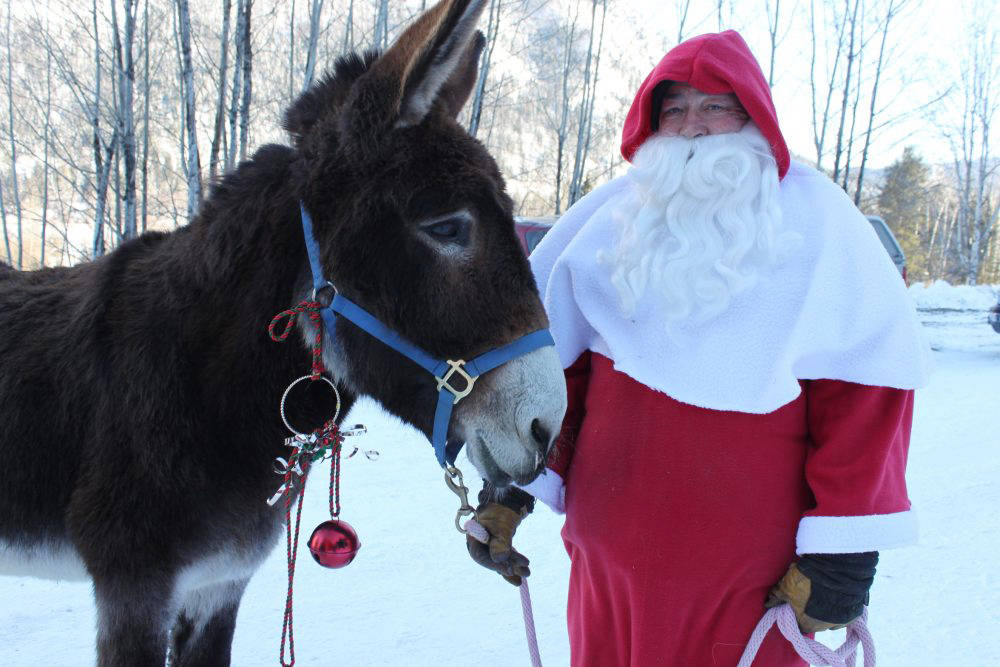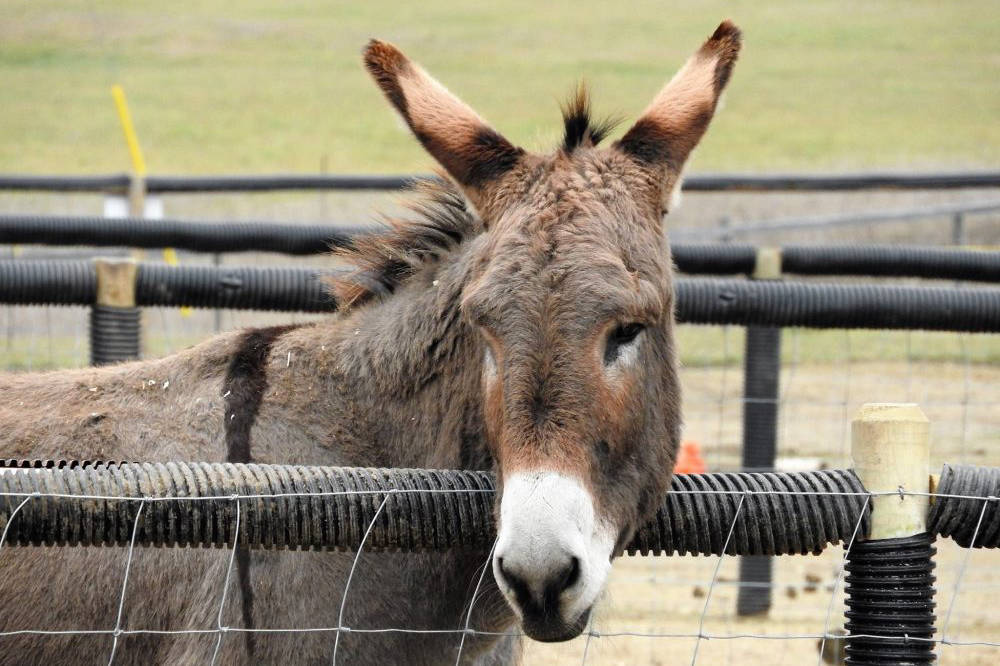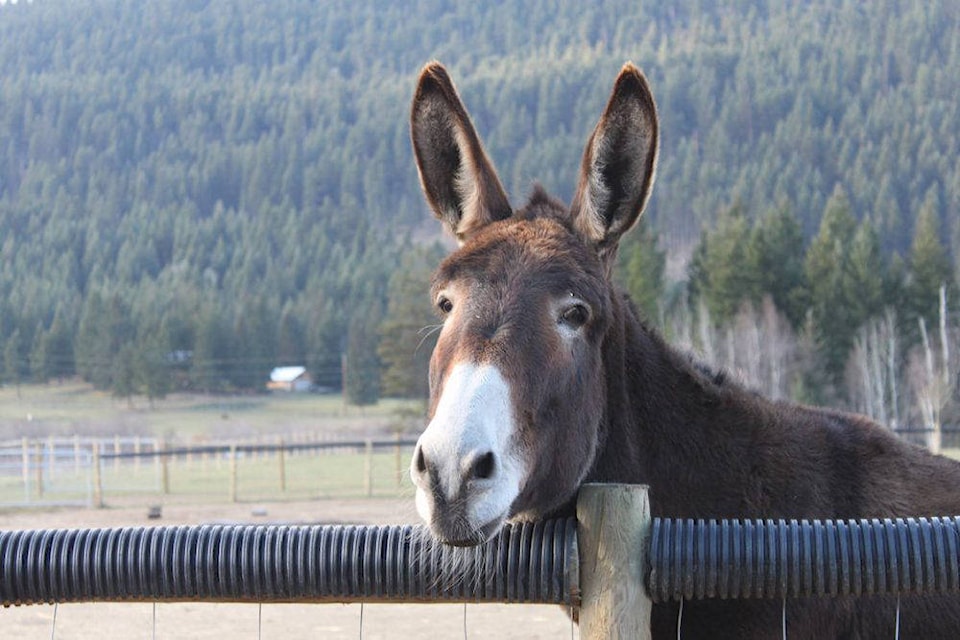While donkeys are well-known for being a small, sturdy cousin to the horse, not all of them are quaint little creatures – in fact, some of them have come to be called “mammoth” due to their uncommonly large size.
Mammoth donkeys are not a unique species, but a line of donkeys that were originally bred to be hardy work animals. They are rumored to have quite an interesting origin story, reported to have originally been bred by figures such as George Washington to create sturdy animals for long days working fields and hauling supplies. They are also used to cross-breed huge mules and packhorses.
READ MORE:
At the Turtle Valley Donkey Refuge in the Shuswap, a group of mammoth donkeys live happily amongst their smaller brothers and sisters, and owner Shirley Mainprize says they are known to be friendly, personable creatures.
(Facebook/Turtle Valley Donkey Refuge)
“They are called the gentle giants, and that kind of sums up how they are to be around. They are generally less territorial, very friendly and were commonly used for work because they are easy to handle,” she says. “They are popular with our visitors – but not as much as the cute mini-donkeys, people love them.”
Mainprize says the refuge currently houses about 14 of the mammoth donkeys, some of whom can trace their lineage back to the first of the big breed to ever reside at the refuge. Initially, a family of mammoth donkeys came to the refuge but, over time and due to some health issues, much of the original family has died off.
READ MORE:
Two of the more prominent mammoths in the herd are Lillie, the refuge’s therapy donkey who is known as one of the most gentle donkeys in the herd, and Kiki, who is said to be “very handsome and carry himself with pride.” Kiki has been trained for riding due to being extremely calm, making him popular with visitors.
“They have a bit of a unique personality and generally get a lot of interest from the visitors. They are not as high-energy as the mini donkeys that run around all the time,” Mainprize says. “They get along well with other donkeys, but they tend to have their favourites among the herd and buddy up.”
Mammoth donkeys aren’t especially common in B.C. because they originate from the eastern parts of the U.S., but Mainprize says there are a few reasons they aren’t seen as frequently as other varieties.
“Regular donkeys tend to be easier to care for in terms of what they need each day, but they can also be harder to handle,” she says.
READ MORE:





